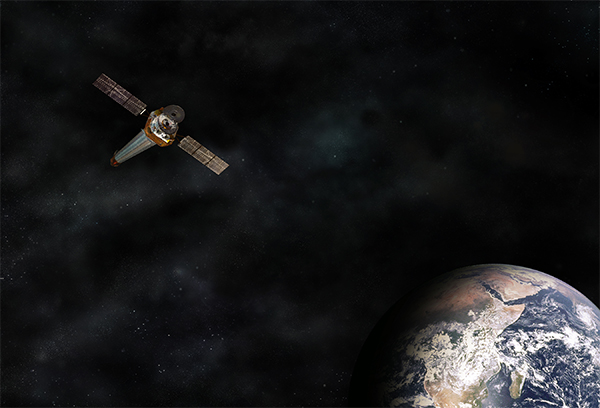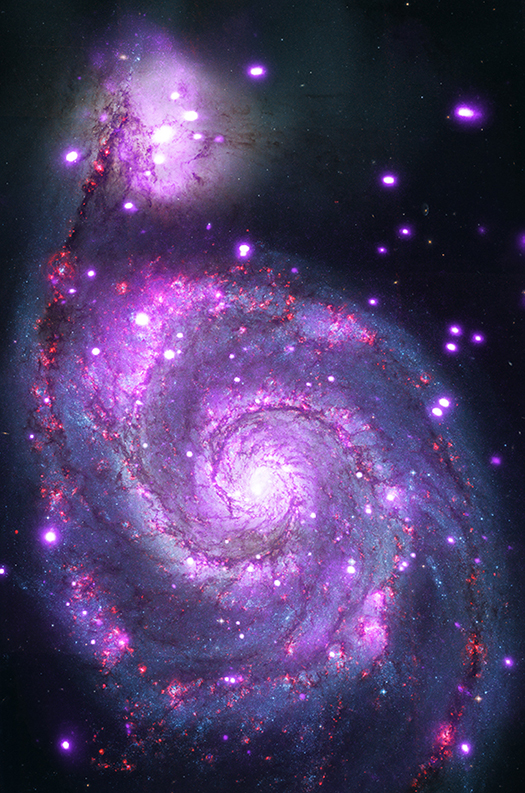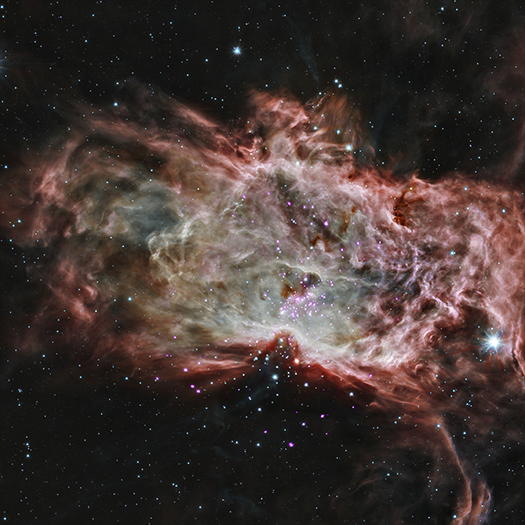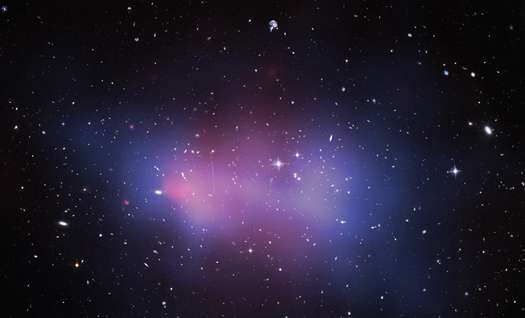Visualizing the X-ray Universe: Stories About Science
Telling a story about science can come in many different shapes, from an image of the area around a black hole, to a three-dimensional model of the remains of an exploded star, to something as simple as a tweet about a planet. Working for the Chandra X-ray Observatory, one of NASA's “Great Observatories” that studies extremely hot regions in space such as colliding galaxies and neutron stars, there is no shortage of data to tell stories about. Chandra orbits about 1/3 of the way to the Moon so it can take long exposures of cosmic objects. This year, Chandra marks its 15th anniversary of science operations out in the cold, dark and somewhat dangerous void of space.
Perhaps 50% of the job of “visualizing the X-ray Universe” is figuring out how we need to look at Chandra’s X-ray data and asking ourselves: what questions are this data trying to answer? what do experts see in this data? how will non-experts view and understand the data? The remaining 50% of the job is then what to do with that data, to make it both accessible and understandable.

Chandra Captures Galaxy Sparkling in X-rays
Nearly a million seconds of observing time with NASA's Chandra X-ray Observatory has revealed a spiral galaxy similar to the Milky Way glittering with hundreds of X-ray points of light.
The galaxy is officially named Messier 51 (M51) or NGC 5194, but often goes by its nickname of the "Whirlpool Galaxy." Like the Milky Way, the Whirlpool is a spiral galaxy with spectacular arms of stars and dust. M51 is located about 30 million light years from Earth, and its face-on orientation to Earth gives us a perspective that we can never get of our own spiral galactic home.
Chandra Helps Explain "Red and Dead Galaxies"
NASA's Chandra X-ray Observatory has shed new light on the mystery of why giant elliptical galaxies have few, if any, young stars. This new evidence highlights the important role that supermassive black holes play in the evolution of their host galaxies.
Because star-forming activity in many giant elliptical galaxies has shut down to very low levels, these galaxies mostly house long-lived stars with low masses and red optical colors. Astronomers have therefore called these galaxies "red and dead".
Chandra and the Camelopardalids
Update (05.28.14): According to the team at the OCC, Chandra was unharmed during this new meteor shower. They report that passage through the stream was 'thankfully unremarkable.' According to all of their information, there was no evidence for any type of impact and it was 'smooth sailing.'
This week, sky watchers will be treated to a special event: a new meteor shower. Meteor showers occur when Earth, on its orbit around the Sun, passes through the debris left behind by a comet. There are some debris fields that Earth passes through every year and produce regular meteor showers that many people have heard of. These include the Leonids in November and the Perseids in July and August.
Chandra "Enthusiastically Endorsed" for Extension in Senior Review
Peter Edmonds is the Chandra Press Scientist and, in addition to his work on publicizing Chandra science, has been heavily involved with the Chandra's Senior Review proposal since 2008.
In science, "peer review" is used to describe a process that determines whether a research paper should be published in a journal. One or more experts review the paper and determine its fate: are the results and discussion reliable and do they meet the publication standards of the journal?
Core-Halo Age Gradients in Young Stellar Clusters
We are delighted to welcome a trio of guest bloggers to discuss their work related to the newest Chandra press release on star clusters and star formation. Konstantin Getman, Eric Feigelson, and Michael Kuhn are colleagues at Penn State University and are all involved in the Massive Young Star-Forming Complex Study in Infrared and X-ray (MYStIX) project led from that institution.

Figure 1: From left to right, Michael Kuhn, Eric Feigelson, and Konstantin Getman.
NASA's Chandra Delivers New Insight into Formation of Star Clusters
Stars are often born in clusters, in giant clouds of gas and dust. Astronomers have studied two star clusters using NASA's Chandra X-ray Observatory and infrared telescopes and the results show that the simplest ideas for the birth of these clusters cannot work, as described in our latest press release.
Professional and Amateur Astronomers Join Forces
We are perhaps living in the midst of a new "Golden Age" of astronomy. In the four hundred years since Galileo first trained his refracting optical telescope on the Moon, and Jupiter and its moons, we've seen staggering advances in the technology of telescopes. We've also benefited from the discoveries of light beyond the visible portions of the electromagnetic spectrum and the development of instruments sensitive to those wavelengths.
Supernova Cleans Up its Surroundings
Supernovas are the spectacular ends to the lives of many massive stars. These explosions, which occur on average twice a century in the Milky Way, can produce enormous amounts of energy and be as bright as an entire galaxy. These events are also important because the remains of the shattered star are hurled into space. As this debris field - called a supernova remnant - expands, it carries the material it encounters along with it.
Monster "El Gordo" Galaxy Cluster is Bigger than Thought
This is a composite image of X-rays from Chandra and optical data from Hubble of the galaxy cluster ACT-CL J0102-4915, located about 7 billion light years from Earth. This cluster has been nicknamed "El Gordo" (or, "the fat one" in Spanish) because of its gigantic mass.






